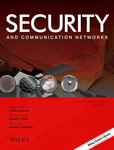A lightweight trust management based on Bayesian and Entropy for wireless sensor networks
ABSTRACT
With the rapid development of wireless sensor networks, the issue of designing a reasonable trust management has attracted more and more research attention. Based on Bayesian and Entropy, this paper proposes a lightweight trust management for wireless sensor networks. First, the evaluated node's direct trust value is calculated by Bayesian and periodically updated according to the combination of effective history records and adaptive decay factor. We use effective history records rather than all the records to save nodes’ memory, and the adaptive decay factor enhances the algorithm's accuracy and dynamic. Then, according to the confidence level of the direct trust value, we decide whether the direct trust is credible enough to be the integrated trust. This can reduce the energy computation and make the algorithm lightweight. Last, if the direct trust is not credible enough, the overall indirect trust value will be calculated. The Entropy Theory is adopted to distribute weights to different trust values, which can improve the problems caused by distributing weights subjectively and also enhance adaptability of the model. Simulation experiments are provided to assess the performance of the proposed trust management in terms of attack–defeat ability and energy consumption. Copyright © 2014 John Wiley & Sons, Ltd.




